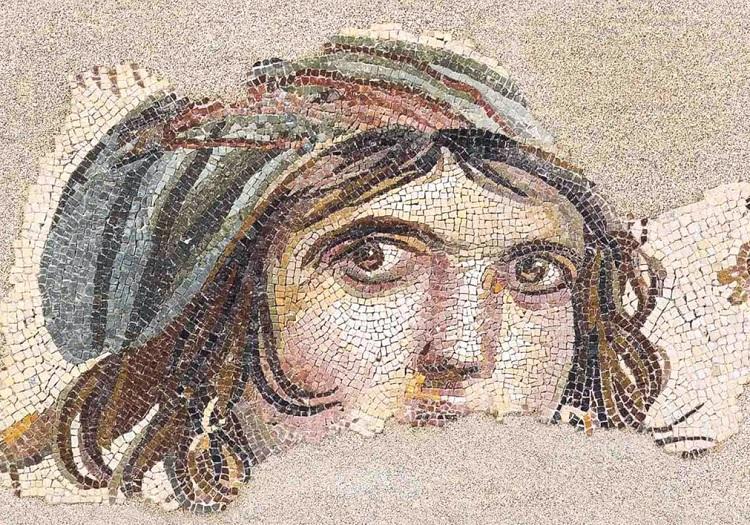
The Turkish Culture and Tourism Ministry has prepared a list titled “10 Unique Archaeological Monuments in Turkey.” T-shaped obelisks with special figures like a lion, bull, fox, crane, snake, and human in the Göbeklitepe ancient site in the southeastern province of Şanlıurfa make it to the top.
The ministry launched the works on the “kültürportalı” web page created as part of its promotional activities.
“Step into a unique experience that will take you back to the feel of ancient times. The 10 magnificent works left behind by civilizations that have existed in these lands for centuries are waiting for you in museums and archaeological sites,” the ministry said.
The ministry’s list is as follows:

Göbeklitepe T-shaped Obelisks (Şanlıurfa Archeology Museum): The obelisks with special figures are 4-6 meters high and weigh 10-14 tons. These obelisks were brought to the temple from a stone quarry located approximately 500 meters north of Göbeklitepe ruins and are carved as a single piece with a T shape. The depictions on the pillars are the result of a rich inner world, a detailed mathematical calculation and advanced technique.

Celsus Library (İzmir Ephesus Ruins): Celsus Library, one of the most magnificent buildings of Ephesus, was built by Consul Gaius Julius Aquila as a monumental tomb in 117 A.D. in the name of his father, the Governor of Asia, Celcus Polamaeanus. The building is known as both a library and a monumental tomb.

Temple of Aphrodite (Aydın Aphrodisias Ruins): The first construction of the temple was carried out in the Archaic period. The temple was converted into a church around 500 A.D. This painstaking and detailed transformation is also a tremendous engineering venture. The inside of the temple was inverted and taken out.

Arsuz Steles (Hatay Archeology Museum): On the fronts of the steles, which are approximately 2.2 meters high and 0.5 meters wide, the Storm God is depicted holding the hand of a male figure, possibly representing the king, under a winged sun disk. There is an eight-and nine-line hieroglyphic inscription on both steles. The author of the text introduces himself as the hero Suppiluliuma, the King of Walistin, son of King Manana.

Antonines Fountain (Burdur Sagalassos Ruins): It was built during the period of Roman Emperor Marcus Aurelius. Seven different colored stones were used in the construction of the magnificent fountain. The single-story fountain is 28 meters long and about nine meters high.
Earliest dated mosaic

Statue of Artemis (İzmir Ephesus Museum): The statue has all the characteristics of Artemis from Ephesus. The goddess’s dress is decorated with reliefs of a bee and lion, ram, deer, griffin and rosettes, which are the symbol of Ephesus, and placed in rectangular sections. These decorations show the goddess’s dominance over animals.

Orpheus Mosaic (Şanlıurfa Haleplibahçe Mosaic Museum): The earliest known mosaic today is the one depicting Orpheus, a mythological figure, dating to the period of the Osrhoene kingdom (194 A.D.), the vassal kingdom of the Roman Empire. Various animals gathered around Orpheus while listening to the poet playing the lyre in the mosaic are depicted.

The Tomb of Alexander (Istanbul Archeology Museums): It is remarkable with its descriptions and historical narrative. Dated to the end of the 4th century B.C., it is thought to belong to Abdalonymus, who was enthroned by Alexander after the Battle of Isos. The sarcophagus takes its name from the figure of Alexander the Great on the relief of the work.

Gypsy Girl Mosaic (Gaziantep Zeugma Mosaic Museum): The sad expression in the eyes of the figure, which constitutes the only remaining part of the floor mosaic of the dining room in the Maenad Villa, made this mosaic the most admired artifact of the museum and was named the “Mona Lisa of Zeugma” and became the symbol of the museum.

Temple of Zeus (Kütahya Aizanoi Ancient City): The temple, which was built on a hill and considered as the important religious structure of the city, is one of the best-preserved Zeus Temples in the world. On the front gallery walls of the temple, there are inscriptions praising Emperor Hadrian and Apuleius, who carried out important services for Aizanoi.